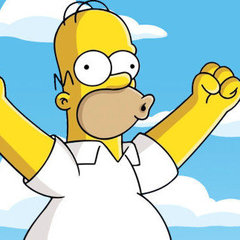-
Content count
864 -
Joined
-
Last visited
-
Days Won
3
About Sanity Check
-
Rank
Dao Bum
Profile Information
-
Gender
derp
-
If I don't take the time to logically break things down, and question what I'm doing, I end up doing things I don't like. Things the human design framework says should be a strength for me somehow turned out to be negative in most if not all cases. The only positives I have are mutation and love cross. Over time I learned and evolved and the love of living things & people.
-
"Tripp meditation app: CALM reimagined." "Mindtopia, a new war to meditate in VR." Is the world ready?
-
King Saul of israel attempted to hunt down and kill David twice. The way David handled both instances is a better example of how to deal in forgiveness and repentance, I think. After the 2nd attempt David said: "there will not be a 3rd time" and moved to another country.
-

Everyone post some favorite quotes!
Sanity Check replied to GrandTrinity's topic in General Discussion
-
When I was a teenager there were many homeless drug addicts who claimed they could astral project. The X-Men series of comic books had mutant characters with psionic abilities who could travel to the astral plane. And people thought they would travelling to the astral plane when they were on LSD. Due to this there are probably a long list of people (myself included) who believed for decades that astral projection was a completely useless thing. Its amazing to me that there are some claiming the opposite.
-
Isn't transcendent freedom only another term for making good choices in life. Some work hard to make bad decisions and how can those people ever be helped if they never chose to help themselves.
-
It has always felt empowering. But on the flip side there have always been strange influences that have tried to make it seem tiring that have tried to influence me into overexerting into burn out. While some portions of the 4/6 description are amazingly accurate for me. One part to it says I should rely on gut instinct, which is like intuition. But my intuition has never been reliable. I've always had to work to avoid impulsive behavior and kneejerk responses. The same with other aspects being polar opposite of what descriptions say they should be.
-
Interesting. Thank you for that. When you read the description for your 3/5 reflector, did it appear unusually accurate? Portions of the description such as: Are all too accurate for me.
-

Are humans better off as sheep?
Sanity Check replied to Cadcam's topic in Abrahamic Religions Discussion
"Father! The sheeple has awakened." -
I got manifesting generator type: manifesting generator authority: sacral definition: single profile: 4/6 channel of perfected form (10 - 57) channel of rhythm (5 - 15) channel of the wavelength (48 - 16) channel of discovery (46 - 29) channel of initiation (51 - 25) personality gate of the behavior of self (10) game of extremes (15) gate of skills (16) gate of depth (48) gate of the hunter (21) gate of ideas (11) gate of privacy (33) gate of sexuality (59) gate of self expression (1) gate of fixed patterns (5) gate of intuitive clarity (57) design gate of the determination of self (46) gate of the spirit of self (25) gate of crisis (36) gate of intuitive clarity (57) gate of shock (51) gate of realization (47) gate of sexuality (59) gate of provocation (39) gate of stillness (52) gate of perserverance (29) gate of alertness (44) gate of fixed patterns (5) gate of depth (48) incarnation cross right angle cross of the vessel of love quarter quarter of mutation
-

Are humans better off as sheep?
Sanity Check replied to Cadcam's topic in Abrahamic Religions Discussion
Evolution has been around for billions of years. While human ignorance has enjoyed a very short lifespan by contrast. Its possible evolution will outlast human ignorance. And that people will eventually evolve out of that state of existence. Although progress could be dragging us kicking and screaming the entire way. -

Life, afterlife, immortality and God.
Sanity Check replied to Cadcam's topic in Esoteric and Occult Discussion
A good question is to ask on the limiting factors of a purely spiritual existence. No demands on time, food, air, water, shelter, etc. A corporeal existence could be more of a slippery slope.
